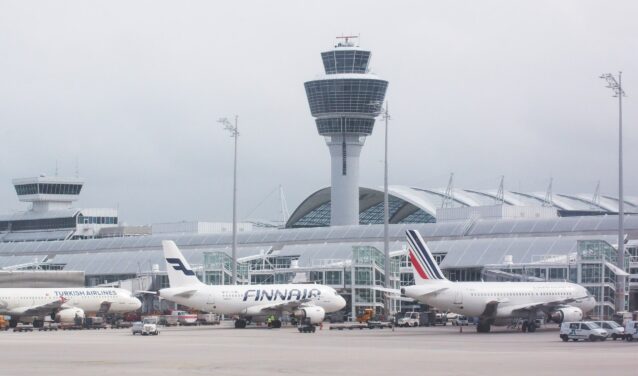Europe is home to some of the world’s most dynamic air hubs, veritable hubs for international and regional trade. These airports are distinguished not only by their passenger traffic, but also by their strategic role in global connectivity.
In this guide, AEROAFFAIRES presents an updated ranking of Europe’s 30 biggest airports in 2025. You’ll find :
- Their size and operational capacity
- Passenger numbers between 2024 and 2025
- Special features in terms of connections and infrastructure
- Alternatives dedicated to business aviation, more fluid and adapted to the needs of private jet travelers
It’s worth noting that the largest airports are not always those with the highest passenger volumes. In this panorama, we also highlight the top 10 French airports and the world’s largest airport in terms of surface area, to give you a complete overview of the main air hubs.
With AEROAFFAIRES, you can turn these often saturated hubs into tailor-made gateways, thanks to our privileged access to airports dedicated to private aviation.
1- London Heathrow Airport (EGLL) – United Kingdom (Europe’s largest)

- Area: approx. 12.3 km² (1,230 hectares).
- Passenger numbers in 2024: 83.9 million, an all-time record for the airport and the highest in Europe.
With 83.8 million passengers in 2024, London Heathrow remains Europe’s leading airport in terms of international traffic, and one of the world’s busiest hubs. In the first half of 2025, it already welcomed 39.9 million passengers, representing growth of +0.2% on 2024, confirming its position as a major gateway to Europe.
Heathrow concentrates the majority of long-haul connections to and from the continent, notably to North America, Asia and the Middle East. But its size and record traffic regularly lead to terminal saturation, safety delays and extended taxiing.
Business aviation alternative:
AEROAFFAIRES recommends airports dedicated to private aviation, which are more fluid and adapted:
- Farnborough Airport (EGLF) – Europe’s benchmark for business aviation, 40 minutes from central London.
- Biggin Hill Airport (EGKB) – in south-east London, with a terminal dedicated exclusively to private jets.
- London Luton (EGGW) – a flexible solution for private jets, with fast access to North London.
Book your private flight to London with AEROAFFAIRES and enjoy fast, discreet and unrestricted access, choosing the airport best suited to your needs.
2.IstanbulAirport (LTFM) – Turkey

- Area: approximately 76.5 square kilometers (7,650 hectares), making it one of the world’s largest airports and Europe’s largest in terms of surface area.
- Passenger numbers in 2024: close to 90 million passengers, with rapid growth and a projected capacity of up to 200 million annual passengers.
Inaugurated in 2018, Istanbul airport has rapidly become one of the world’s largest and busiest. With over 80 million passengers by 2024, it is the hub for connections between Europe, Asia and the Middle East.
While its gigantic size ensures global connectivity, it also means long distances to terminals and regular saturation.
Alternative business aviation :
- Istanbul-Atatürk (LTBA), today reserved for business aviation, or Sabiha Gökçen (SAW), more convenient depending on your destination.
With AEROAFFAIRES, access Istanbul smoothly and confidentially.
3- Roissy-Charles-de-Gaulle Airport (LFPG) – Paris – France
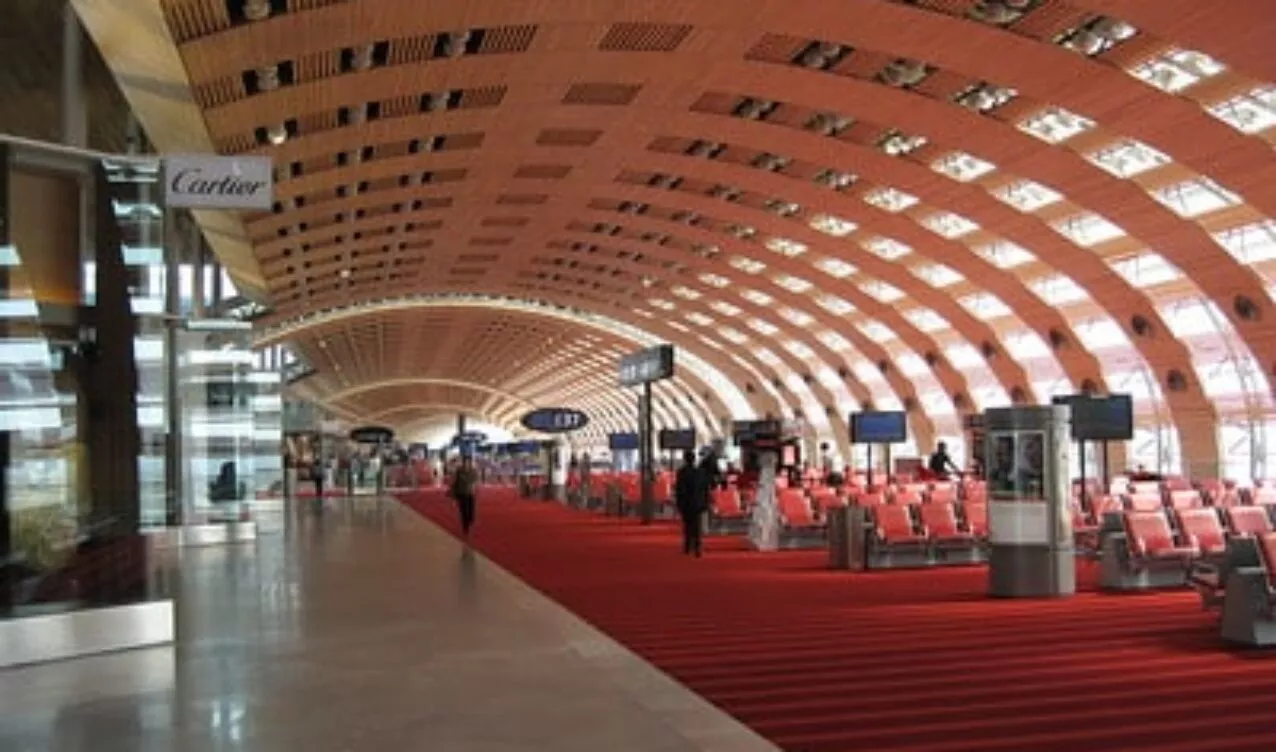
- Surface area: approx. 3,257 hectares (32.57 km²), making it France’s largest airport and Europe’s second-largest after London Heathrow.
- Passenger numbers in 2024: around 70.3 million passengers, up sharply (+4.3% on 2023), making it Europe’s third-largest airport in terms of passenger traffic, behind London and Istanbul.
With a surface area of 32.38 km², Paris-Charles-de-Gaulle remains Europe’s largest airport in terms of surface area, and France’s main international hub. In 2024, it welcomed 67.4 million passengers, making it the 2ᵉ busiest airport in Europe behind London-Heathrow. In the first half of 2025, traffic has already reached 33.2 million passengers, up +3.1% on H1 2024.
CDG is renowned for its exceptional connectivity: it serves almost all the world’s major capitals, particularly Asia and North America. Its multiple terminals and modern infrastructure make it an essential hub, but also an often congested airport, where checks and connections can significantly lengthen journey times.
Alternative business aviation :
- Paris-Le Bourget (LFPB) – For business aviation, AEROAFFAIRES recommends this airport, located in the immediate vicinity of the capital.
- Europe’s leading airport for private flights, it offers :
- Fast, discreet access to business terminals
- accelerated customs formalities,
- Total flexibility of time slots.
Book your private flight with AEROAFFAIRES via Le Bourget and enjoy a smooth departure to all your international destinations, without the constraints of a major commercial hub.
4-Amsterdam-Schiphol Airport(EHAM) – Netherlands

- Area: approx. 2,787 hectares (27.87 km²).
- Passenger numbers in 2024: approx. 72 million, making it Europe’s 3rd busiest airport after London-Heathrow and Paris-Charles-de-Gaulle.
Amsterdam-Schiphol airport remains one of Europe’s leading hubs, handling almost 67 million passengers in 2024. Its 27.87 km² surface area and modern infrastructure make it a key hub between Europe, America and Asia. Schiphol is renowned for its operational efficiency, exemplary organization and cutting-edge technologies, which enable it to handle a considerable volume of traffic.
However, this traffic intensity regularly leads to congestion and delays, particularly during peak periods. For demanding business travellers, this can represent a major constraint.
Alternative business aviation:
With AEROAFFAIRES, you can avoid these inconveniences by choosing airports more suited to private aviation, such as nearby Amsterdam Airport Lelystad (EHLE) or Rotterdam-The Hague (EHRD). These alternatives offer total discretion, a boarding time reduced to just a few minutes and a direct connection to your European and intercontinental destinations.
Book your private flight with AEROAFFAIRES today and benefit from personalized assistance for your travels in the Netherlands and beyond.
5. Madrid-Barajas Adolfo Suárez Airport(LEMD) – Spain

- Area: approx. 30.5 km² (3,050 hectares).
- Passenger numbers in 2024: approx. 61 million, making it Europe’s 5th busiest airport in terms of passenger traffic.
Adolfo Suárez Madrid-Barajas airport is Spain’s largest and the capital’s main air gateway. With over 66 million passengers by 2024, it is a strategic hub linking Europe, Latin America and the Middle East. Its vast 30.5 km² surface area and modern infrastructure make it a benchmark hub for both international and domestic flights.
However, this traffic intensity can lead to frequent delays and limit flexibility for business travellers.
Alternative business aviation:
For fast, confidential access to Madrid, Madrid-Torrejón airport (LETO) is a preferred option. Specialized in business aviation, it offers simplified boarding and total discretion.
6- Frankfurt am Main Airport (EDDF) – Germany

- Area: approx. 2,160 hectares (21.6 km²).
- Passenger numbers in 2024: approx. 61 million, making Frankfurt Europe’s fourth busiest airport after London, Paris and Amsterdam.
Frankfurt airport is Germany’s leading air hub and one of the largest in Europe. With 61.5 million passengers in 2024, it remains an essential hub, linking Europe to Asia, Africa and America. Its strategic role is reinforced by a vast network of intra-European and intercontinental connections, making it an essential hub for international airlines.
Its modern infrastructure and high-performance logistics system ensure efficient management of passenger and freight flows. However, its traffic intensity and terminal saturation make the experience sometimes restrictive for business travelers in search of speed and flexibility.
Alternative business aviation:
Frankfurt-Egelsbach Airport (QEF), just 17 km away, is one of Europe’s busiest hubs for private jets. It offers discreet boarding and direct access to the Frankfurt region.
Book your private flight with AEROAFFAIRES and benefit from tailor-made assistance for your trips to Germany.
7- Barcelona-El Prat Airport(LEBL) – Spain
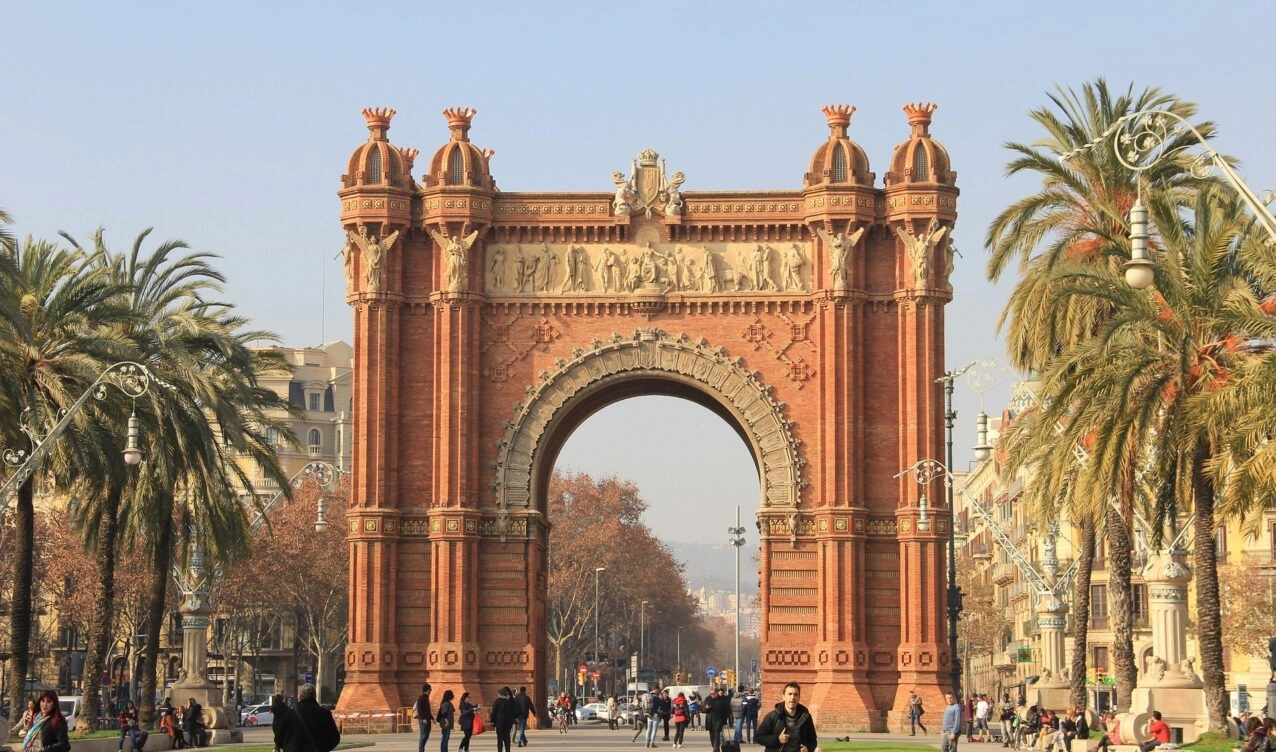
- Surface area: approx. 1,300 hectares (13 km²).
- Passenger numbers in 2024: close to 55 million passengers, with a summer record of over 5.5 million in July 2025 and continued traffic growth.
spain’s second-largest airport after Madrid-Barajas, Barcelona-El Prat welcomed 55 million passengers in 2024. It is the main gateway to Catalonia and a strategic Mediterranean hub, notably to Europe and Latin America.
But strong traffic growth is leading to regular infrastructure saturation, ill-suited to business travellers’ need for flexibility.
Alternative business aviation :
Girona-Costa Brava (GRO) or Reus (REU), both less than 100 km away, are preferred for fast, confidential operations by private jet.
Contact AEROAFFAIRES to organize your private trips in Catalonia.
8. Rome Fiumicino Leonardo da Vinci Airport(LIRF) – Italy

- Surface area: 14.5 km²
- Passenger numbers in 2024: 49.2 million
With almost 50 million passengers in 2024, Rome-Fiumicino is Italy’s leading airport and one of the main gateways to the Mediterranean. Thanks to its four modern terminals, it links Italy to the major European and world metropolises.
However, its size and traffic make it a very busy hub, sometimes complex to manage for connecting passengers or business travelers.
Alternative business aviation :
Rome-Ciampino (CIA), located 15 km from the city center, is dedicated to private jets and offers direct, discreet access to the Italian capital.
Book your private flight with AEROAFFAIRES to reach Rome without any hassle.
9- Moscow-Sheremetyevo Airport – Russia

- Surface area: 13 km²
- Number of passengers in 2024: 43.7 million
Sheremetyevo is Russia’s leading airport in terms of passenger traffic, with 43.7 million passengers in 2024. Located northwest of Moscow, it serves an extensive network to Europe, Asia and America.
Due to the current geopolitical context, however, aviation restrictions limit some international connections and can complicate operations for business aviation.
Alternative business aviation:
Moscow-Vnukovo (VKO), historically used for private and government aviation, remains the preferred airport for business flights.
With AEROAFFAIRES, benefit from tailor-made support for your missions in Russia.
10- London-Gatwick Airport – United Kingdom

- Surface area: 6.7 km²
- Passenger numbers in 2024: 41.0 million
London’s second-largest airport after Heathrow, Gatwick remains one of the UK’s major hubs. With over 41 million passengers in 2024, it illustrates the importance of the British capital as a global hub for air transport.
Despite its smaller size, Gatwick stands out for its efficient organization and modern infrastructure, capable of absorbing dense traffic. Located some forty kilometers from central London, it offers a convenient alternative for international travelers, particularly on transatlantic and European routes.
For business travellers, however, the high volume of traffic and the predominance of commercial flights can represent a brake in terms of comfort and speed.
Alternative business aviation :
London-Biggin Hill (BQH ) or Farnborough (FAB), two airports specialized in business aviation, guarantee a seamless experience, rapid boarding and direct access to private terminals.
With AEROAFFAIRES, take advantage of a departure from an airport designed for private jets to optimize your travel to London and abroad.
11. Munich Franz-Josef-Strauß Airport – Germany
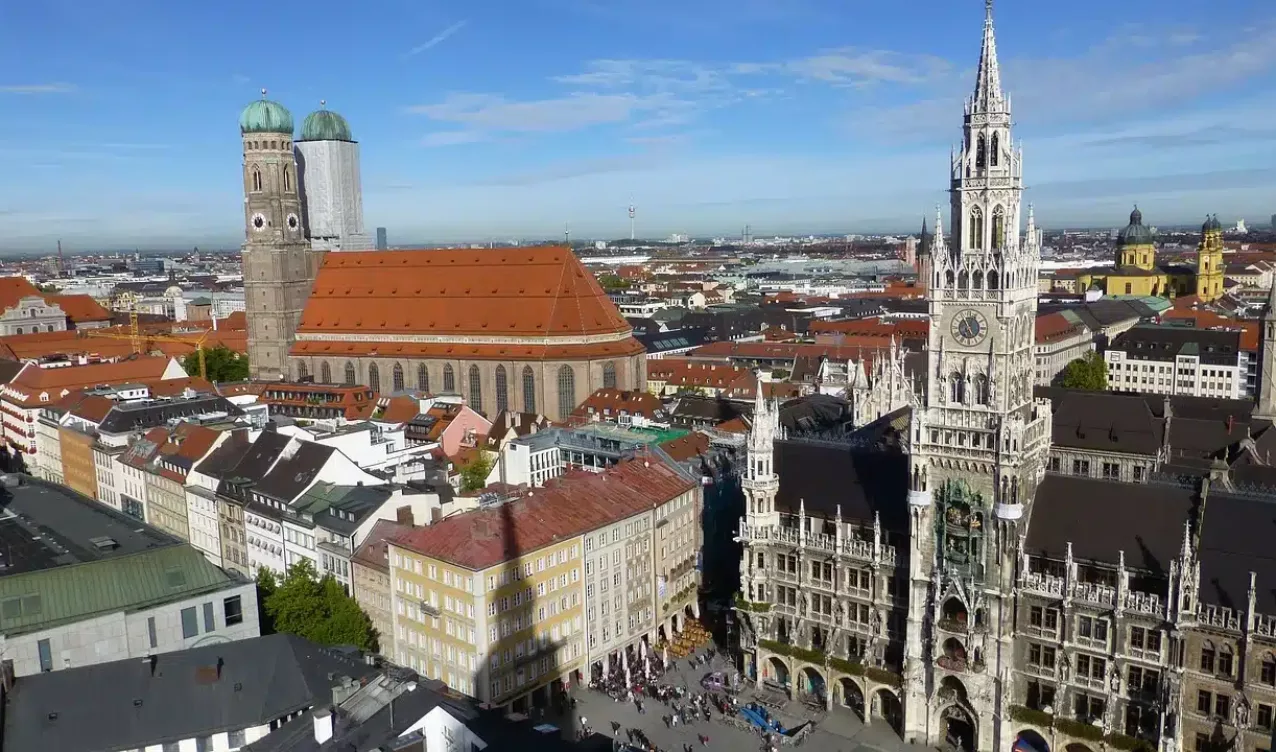
- Surface area: 15.6 km²
- Passenger numbers in 2024: 37.0 million
Germany’s second-largest airport after Frankfurt, Munich-Franz-Josef-Strauß is a key hub in Central Europe. With almost 37 million passengers in 2024, it is one of the most efficient hubs on the continent.
Renowned for its efficiency and modern facilities, Munich offers excellent connectivity to Asia, North America and the Middle East, in addition to its intra-European routes. Its fluid management and quality of service regularly earn it a place among Europe’s top airports in terms of passenger satisfaction.
However, its high traffic levels can lengthen check-in times and make the experience less suited to the imperatives of business travelers.
Alternative business aviation :
Oberpfaffenhofen (OBF) and Augsburg (AGB), located close to Munich, are particularly popular airports for private jet flights, offering fast, discreet and flexible access to the Bavarian region.
With AEROAFFAIRES, you can reach Munich according to your own requirements, with direct access to the private terminals and optimized travel time.
12. lisbon Humberto Delgado Airport – Portugal

- Surface area: 5 km²
- Passenger numbers in 2024: 35.1 million
Humberto Delgado Airport, better known as Lisbon Airport (LIS), is Portugal’s main hub and one of the busiest in Southern Europe. With 35.1 million passengers expected in 2024, it is a prime example of the Portuguese capital’s dynamic tourism and economic development.
Located just 7 km from the city center, it offers extensive connectivity to Europe, Africa and Latin America. However, its chronic saturation and infrastructure constraints sometimes limit the flow of traffic, an issue that the new airport projects aim to resolve.
For business travellers, this heavy congestion can generate delays and reduce the flexibility they expect.
Alternative business aviation:
Cascais Tires (LPCS), located 20 km from Lisbon, is widely preferred by business aviation customers. Faster, more confidential and with dedicated services, it offers optimized access to the capital.
With AEROAFFAIRES, you can reach Lisbon according to your own schedule, thanks to direct access to private terminals.
13- Dublin International Airport – Ireland

- Surface area: 11 km²
- Passenger numbers in 2024: 32.6 million
Ireland’s main air hub, Dublin plays a strategic role in transatlantic links between Europe and North America. With 32.6 million passengers in 2024, it is one of the most dynamic hubs in Western Europe.
Its proximity to the capital (10 km) makes it a convenient access point, but strong traffic growth can lead to congestion and longer delays.
Alternative business aviation :
Weston Airport (EIWT), 20 km from the center, is perfectly suited to private jets thanks to its discreet environment and fast terminals.
With AEROAFFAIRES, you’ll enjoy smooth boarding and direct access to Dublin for your business needs.
14 Palma de Mallorca Airport – Spain
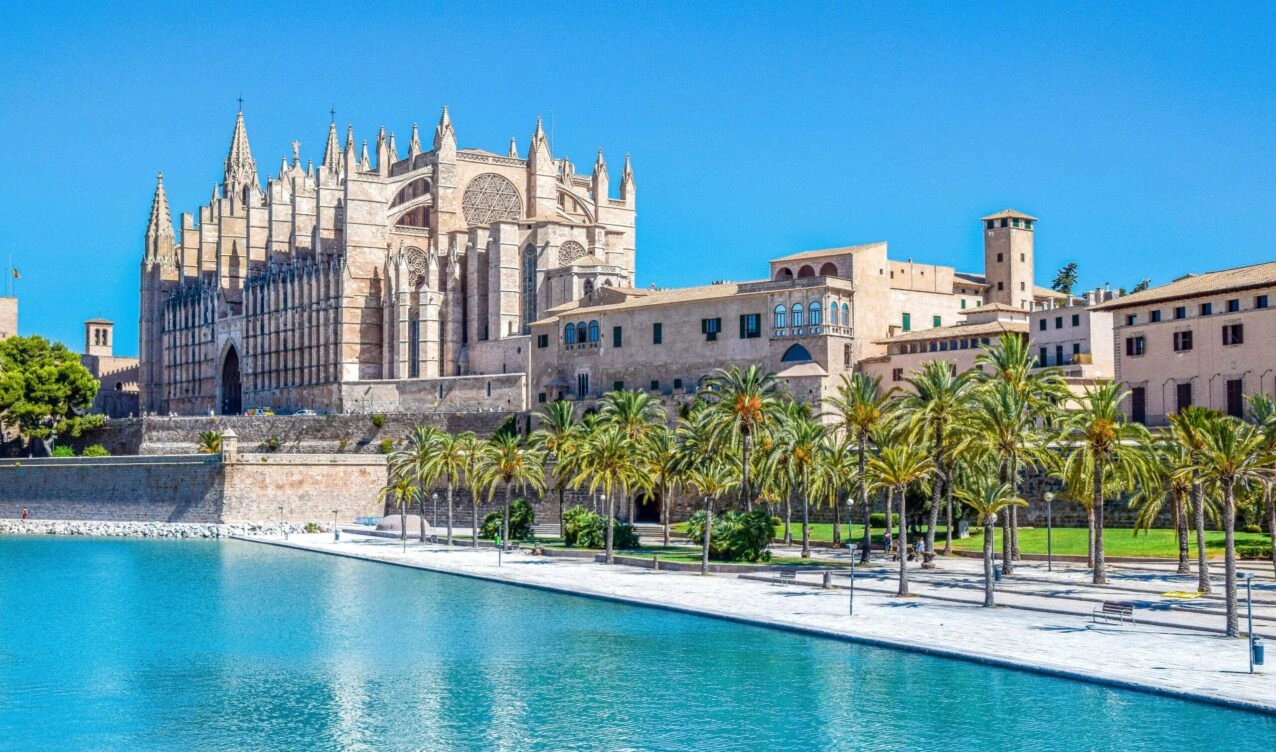
- Surface area: 6.3 km²
- Number of passengers in 2024: 31.1 million
Palma de Mallorca airport is the main gateway to the Balearic Islands. With over 31 million passengers in 2024, it is one of Spain’s busiest airports, especially in high season.
It handles massive tourist traffic, which can make the experience ill-suited to the imperatives of business aviation, especially in the summer months.
Alternative business aviation:
Son Bonet (LESB), 8 km from Palma, is dedicated to private jets and general aviation, guaranteeing fast, fluid and discreet access to the island.
With AEROAFFAIRES, reach Majorca without the constraints of high season, thanks to a tailor-made service.
15- Paris-Orly Airport – France

- Surface area: 15.3 km²
- Passenger numbers in 2024: 32.3 million
Paris’ second-largest hub, Orly is an essential hub for domestic and European flights. With 32.3 million passengers in 2024, it is a must for domestic and regional connections.
However, the saturation of its terminals and its strong focus on commercial traffic may limit the flexibility sought by business travellers.
Business aviation alternative :
Paris-Le Bourget (LBG), 12 km from the center, is Europe’s leading airport dedicated to private jets, and offers a service totally designed for business aviation.
With AEROAFFAIRES, reach the capital from or to Orly with maximum comfort and confidentiality.
16. Athens International Airport Elefthérios-Venizélos (ATH) – Greece
- Surface area: 16.6 km²
- Passenger numbers in 2024: 31.9 million
Athens airport is Greece’s main air hub, with almost 32 million passengers in 2024. It serves a wide network of European, Asian and Middle Eastern destinations, playing a vital role for tourism and business.
Alternative business aviation :
Megara Airport (LGMG), located 40 km from Athens, is often used by private aviation.
With AEROAFFAIRES, take advantage of a smooth arrival in Greece thanks to direct access to private terminals, to quickly reach Athens or the islands.
17- Vienna-Schwechat Airport – Austria

- Surface area: 25 km²
- Passenger numbers in 2024: 31.7 million
With 31.7 million passengers in 2024, Vienna-Schwechat is Austria’s largest airport. It occupies a strategic position at the heart of Central Europe, facilitating connections to Eastern Europe and the world’s major capitals.
Alternative business aviation :
Vienna-Bad Vöslau (LOAV), located 30 km from the capital, offers convenient, discreet access for private jet flights.
With AEROAFFAIRES, you can reach Vienna with complete peace of mind, thanks to personalized service and solutions tailored to diplomatic and business missions.
18- Zurich Airport – Switzerland

- Surface area: 800 hectares
- Passenger numbers in 2024: 31.2 million
Zurich is Switzerland’s leading airport, renowned for its efficiency and quality of service. With 31.2 million passengers in 2024, it is a key hub for European and intercontinental connections.
Alternative business aviation:
Zurich already boasts a top-class executive terminal, but many customers also opt for St. Gallen Altenrhein (ACH), offering discretion and speed just one hour from the metropolis.
With AEROAFFAIRES, enjoy a tailor-made arrival in Switzerland, with personalized transfers to the Alps or business centers.
19- Manchester Airport – United Kingdom

- Surface area: 560 hectares
- Passenger numbers in 2024: 30.9 million
Manchester is the most important airport in the north of England, with almost 31 million passengers in 2024. It serves a wide range of European, American and Asian destinations, playing a key role in regional economic development.
Alternative business aviation :
The smaller Liverpool John Lennon (LPL) and Manchester City Airport (Barton, EGCB) offer ideal flexibility for private flights.
With AEROAFFAIRES, you can reach the north of England under optimum conditions, without the congestion of commercial terminals.
20- Copenhagen Airport – Denmark

- Surface area: 11 km²
- Passenger numbers in 2024: 29.9 million
As Scandinavia’s leading airport, Copenhagen-Kastrup will welcome nearly 30 million passengers in 2024. Its central role makes it a major gateway to Northern Europe and intercontinental destinations.
Alternative business aviation:
Rosklide (RKE), located 30 km from Copenhagen, is a privileged base for private jets, ensuring speed and discretion.
With AEROAFFAIRES, benefit from a service tailored to business travel, with direct access to the region’s private terminals.
21. London-Stansted Airport (STN) – United Kingdom

- Surface area: 9 km²
- Passenger numbers in 2024: 29.8 million
Stansted is one of London’s major airports, specializing in European and low-cost flights. With nearly 30 million passengers in 2024, it represents a strategic entry point for travelers.
Alternative business aviation:
Stansted already has a private aviation terminal, but business travellers also prefer London-Luton (LTN) or Biggin Hill (BQH) for a more upscale experience.
With AEROAFFAIRES, avoid the constraints of London commercial flights and take off from an airport dedicated to private jets.
22. Stockholm-Arlanda Airport (ARN) – Sweden
- Surface area: 2,600 hectares
- Passenger numbers in 2024: ~27 million
Stockholm-Arlanda is Sweden’s leading airport, with around 27 million passengers in 2024. It serves Europe as well as America and Asia, playing a key role in Nordic trade.
Alternative business aviation:
Stockholm-Bromma (BMA), just 8 km from the center, is an ideal airport for private aviation, guaranteeing fast, confidential boarding.
With AEROAFFAIRES, you can reach the Swedish capital seamlessly, thanks to fully customized solutions.
23-Brussels-Zaventem Airport (BRU) – Belgium

- Surface area: 1,245 hectares
- Passenger numbers in 2024: ~26 million
Located a dozen kilometers from the city center, Brussels-Zaventem is Belgium’s leading airport, with some 26 million passengers in 2024. A central hub for the European Union, it serves European, African and intercontinental destinations.
Alternative business aviation:
Brussels South Charleroi (CRL), used for its flexibility, or Antwerp-Deurne (ANR), 45 km from Brussels, are preferred for private jet flights.
With AEROAFFAIRES, save time in Brussels thanks to immediate departures from private terminals, adapted to diplomatic and business missions.
24- Milan Malpensa Airport – Italy

- Surface area: 935 hectares
- Passenger numbers in 2024: ~27 million
Italy’s second-largest airport after Rome-Fiumicino, Milan-Malpensa welcomed nearly 27 million passengers in 2024. It is the main hub of the Lombardy region, Italy’s economic and industrial powerhouse, as well as a major gateway for fashion and finance.
Alternative business aviation:
Milan-Linate (LIN), closer to the city center, is particularly popular with private jet travelers for its rapid access. Bergamo-Orio al Serio (BGY) is also used for business aviation.
With AEROAFFAIRES, you’ll benefit from direct access to Milan’s private terminals and tailor-made organization for your trips to Lombardy and abroad.
25. Düsseldorf Airport (DUS) – Germany
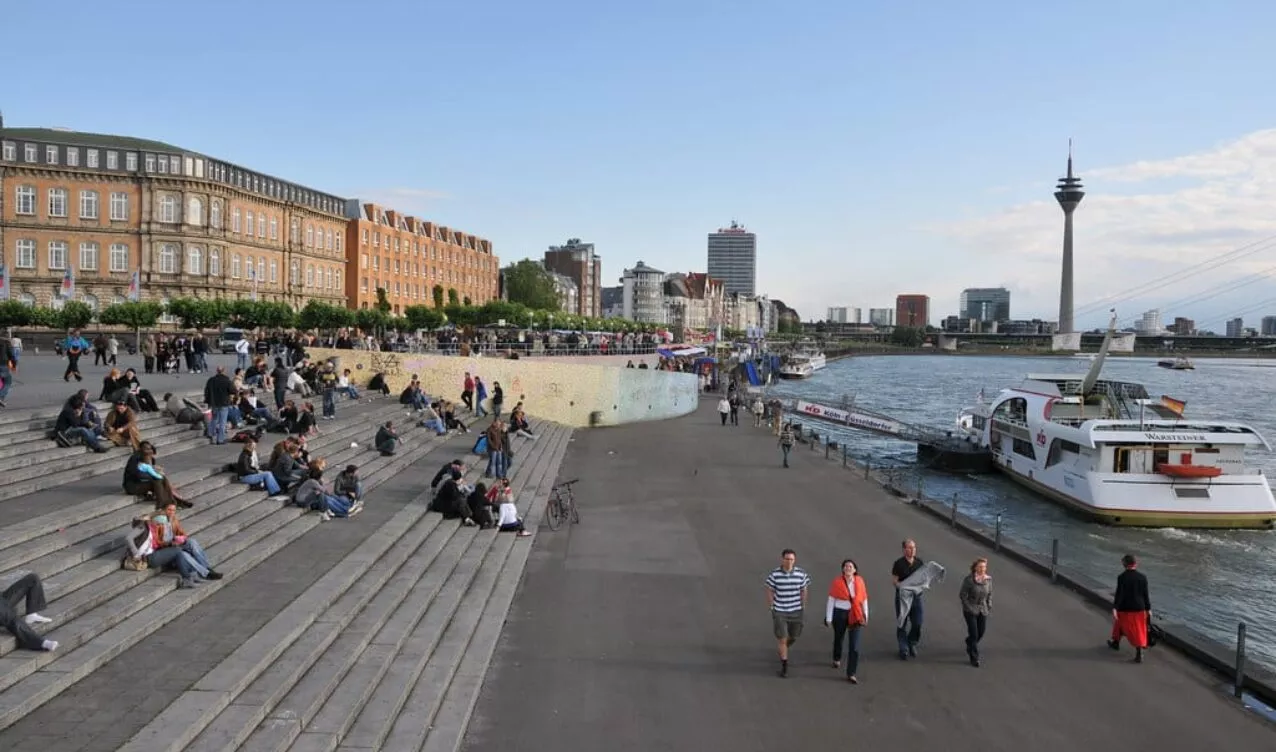
- Surface area: 6 km²
- Passenger numbers in 2024: ~27 million
Germany’s third-largest airport, Düsseldorf plays a key role for North Rhine-Westphalia, a strategic industrial and economic region. With almost 27 million passengers in 2024, it provides dense connectivity to Europe and the Middle East.
Alternative business aviation :
Essen/Mülheim Airport (ESS), 25 km away, is a privileged base for private jet flights, offering flexibility and immediate proximity to the economic heart of the Ruhr.
With AEROAFFAIRES, optimize your trips to Düsseldorf with direct access to private terminals.
26. Berlin-Brandenburg Airport (BER) – Germany
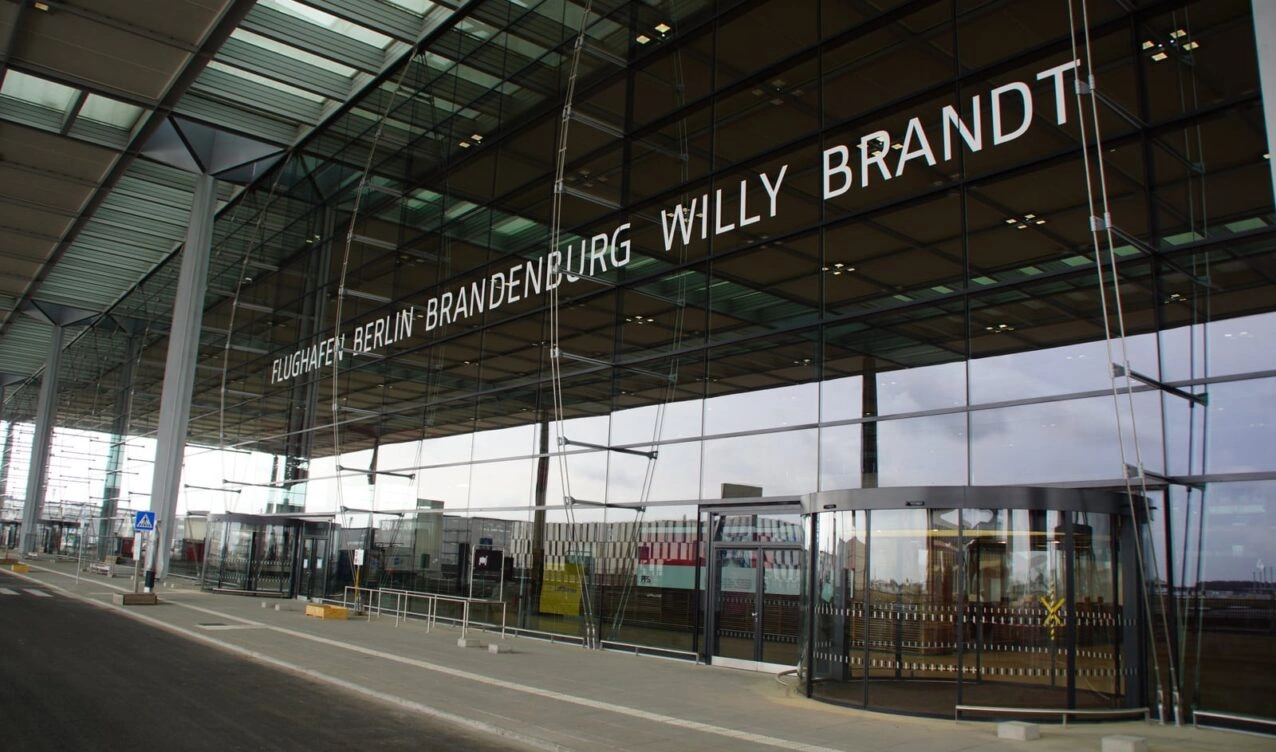
- Surface area: 14.7 km²
- Passenger numbers in 2024: ~25 million
Opened in 2020, Berlin-Brandenburg has replaced Tegel and Schönefeld as the German capital’s main air hub. With around 25 million passengers in 2024, it remains a hub on the rise.
Alternative business aviation:
Berlin-Schönefeld Airport (EDDB) still has facilities dedicated to business aviation. For greater confidentiality, Strausberg (EDAY), to the east of Berlin, is also used by private jets.
With AEROAFFAIRES, reach Berlin according to your business constraints, with optimized departures from private terminals.
27.Oslo-Gardermoen Airport (OSL) – Norway

- Surface area: 13.2 km²
- Passenger numbers in 2024: ~24 million
Norway’s main airport, Oslo-Gardermoen concentrates most of the country’s traffic, with around 24 million passengers in 2024. It is an essential hub for Scandinavian and transatlantic connections.
Alternative business aviation:
Oslo Fornebu (FBU), formerly the capital’s main airport, is now home to private aviation and is ideally located close to the city center.
With AEROAFFAIRES, save time in Oslo with tailor-made solutions for your private jet travel needs.
28.Helsinki-Vantaa Airport (HEL) – Finland

- Surface area: 19 km²
- Passenger numbers in 2024: ~21 million
With around 21 million passengers in 2024, Helsinki-Vantaa is Finland’s leading airport and a strategic hub linking Europe and Asia. Its operational efficiency and long-haul connections make it a modern, high-performance hub.
Alternative business aviation :
Helsinki-Malmi (EFHF), just 10 km from the city center, remains a preferred option for business aviation despite its smaller size.
With AEROAFFAIRES, take advantage of a smooth arrival in Helsinki via private terminals adapted to the requirements of business customers.
29. Málaga-Costa del Sol Airport (AGP) – Spain
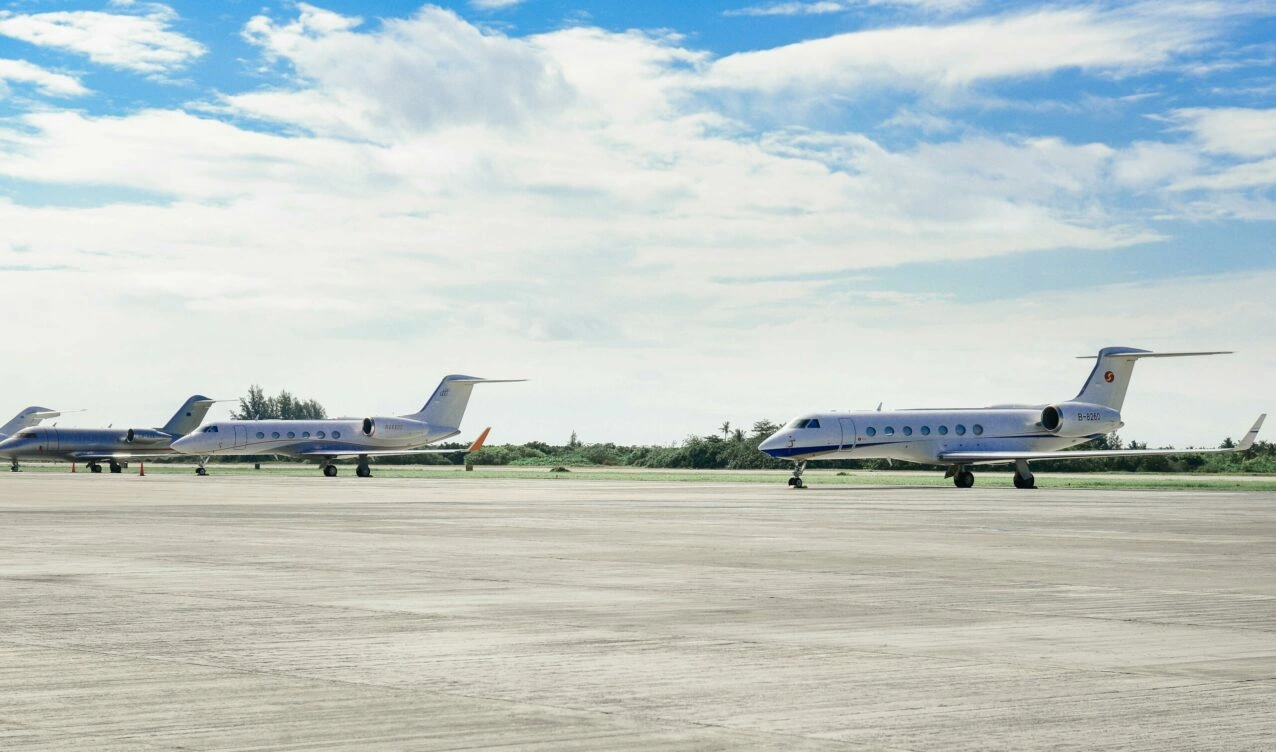
- Surface area: 15 km²
- Passenger numbers in 2024: ~20 million
Located in Andalusia, Málaga-Costa del Sol is one of Spain’s main tourist hubs, with around 20 million passengers in 2024. It serves the entire Mediterranean coast and remains a major entry point for international tourism.
Alternative business aviation:
The airport already has a dedicated general aviation terminal, but Marbella Heliport is also used by travelers seeking direct access to the Costa del Sol.
With AEROAFFAIRES, you can fly directly to your villa or resort in Andalusia by helicopter transfer or private flight.
30. Geneva Airport (GVA) – Switzerland

- Surface area: 5.4 km²
- Passenger numbers in 2024: ~17 million
With around 17 million passengers in 2024, Geneva is one of Switzerland’s most important airports, at the heart of an international region where numerous institutions and multinationals are headquartered.
Alternative business aviation:
Geneva airport already boasts one of the most prestigious private terminals in Europe, but for greater discretion, some travellers choose Lausanne-Blécherette (QLS) for their trips.
With AEROAFFAIRES, benefit from direct access to Geneva’s private lounges and tailor-made organization for your travels in Switzerland and abroad.
What are the top 8 French airports?
France is renowned for its modern, high-performance airport network, which plays an important role in international and regional air transport.
While the top two on the podium – Roissy Charles-de-Gaulle and Orly – are Parisian must-sees, this section focuses on the provincial airports that make a significant contribution to the country’s connectivity.
Explore the rankings of these top infrastructures in detail, their passenger numbers and the assets that make them strategic hubs for business and leisure travel.
1- Nice – Côte d’Azur Airport
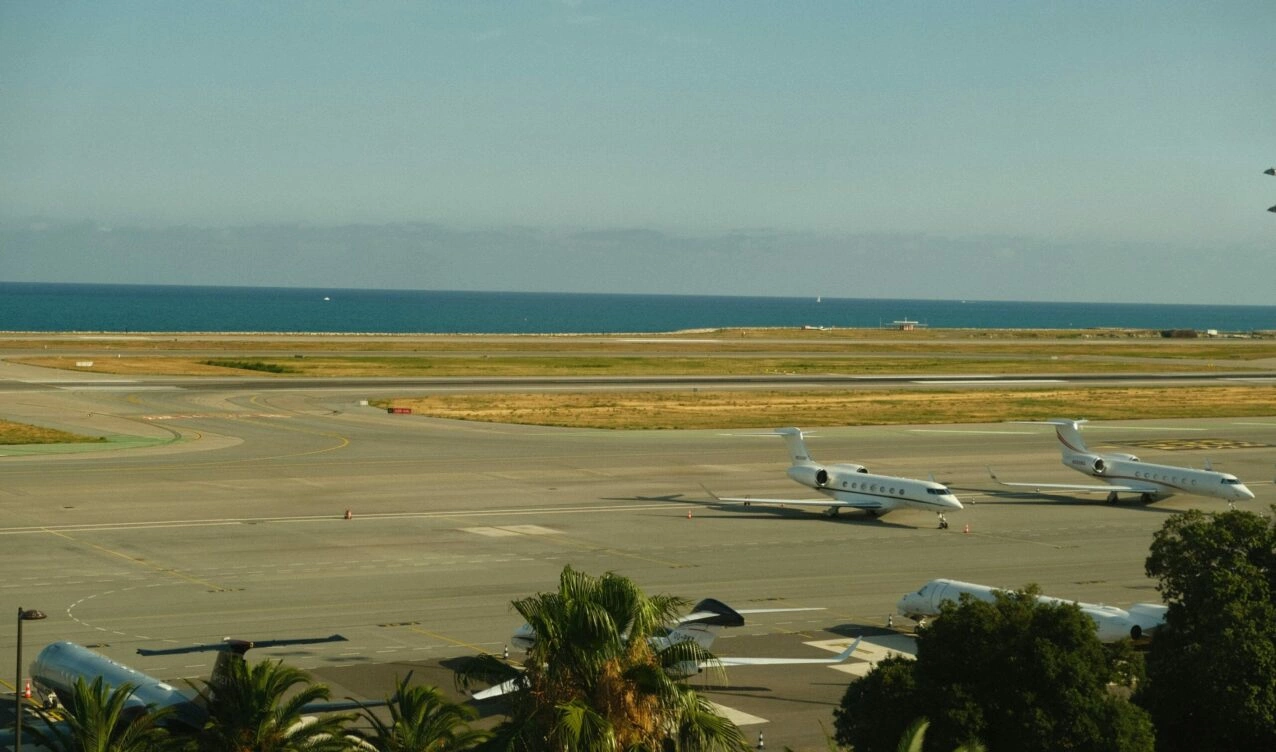
- Area : Nice Côte d’Azur airport covers an area of around 370 hectares, of which 270 hectares are reserved for runways (two parallel runways 2,960 m and 2,570 m long) and the remainder for terminal facilities and miscellaneous areas.
- Passenger numbers in 2024: around 14 to 15 million passengers (post-pandemic recovery trend).
Located at the heart of the French Riviera, Nice – Côte d’Azur Airport is much more than just a transit point.
A showcase for the region’s tourism and economic dynamism, the airport welcomes over 14 million passengers a year, offering a multitude of services tailored to the needs of international and domestic travelers alike.
This strategic hub stands out for its ability to handle large volumes of traffic and for its modernity, particularly in the field of business aviation.
It is ranked as Europe’s second airport in terms of business aviation movements (behind Paris-Le Bourget).
It attracts tourists in search of sunshine and culture, as well as demanding professionals looking for fast, efficient travel.
2- Lyon-Saint-Exupéry airport
- Surface area :
- Number of passengers in 2024 :
Located in the Auvergne-Rhône-Alpes region, Lyon-Saint-Exupéry Airport is a key gateway to southeastern France.
With almost 12 million passengers in 2019, this airport is renowned for its modern infrastructure, excellent connectivity and high-quality customer service.
Lyon-Saint-Exupéry was named the best European airport in its capacity category in 2019, and has positioned itself as a veritable hub for air transport, facilitating trade and tourism.
Its many direct national and international connections make this airport a focal point for travelers seeking efficiency, comfort and speed.
3- Marseille-Provence airport

- Surface area :
- Number of passengers in 2024 :
Strategically located in the Mediterranean region, Marseille-Provence Airport plays a major role in boosting air transport in the south of France.
With over 10 million passengers in 2019, it serves as a veritable showcase for Provence, offering travelers a gateway to a region rich in history, gastronomy and enchanting landscapes.
The airport stands out for its modern infrastructure and its commitment to meeting the growing demands of the airline industry.
Thanks to its wide range of destinations and optimized traffic management, Marseille-Provence makes a significant contribution to regional economic development and the promotion of tourism in one of France’s most sought-after regions.
4- Toulouse-Blagnac Airport

- Surface area :
- Number of passengers in 2024 :
Representing the dynamism of southwest France, Toulouse-Blagnac airport is intimately linked to the world of aeronautics and innovation.
Welcoming nearly 9.6 million passengers in 2019, it is recognized not only for its operational performance but also for its central role in the aerospace industry, thanks in particular to the presence of Airbus and numerous technological players.
This airport combines modernity and efficiency to offer quality services to a diverse clientele, from aviation professionals to holidaymakers.
Its ongoing commitment to improving the passenger experience and flow management contributes to its reputation as a first-rate infrastructure, essential to the international reputation of the Toulouse region.
5- Basel-Mulhouse-Freiburg Airport

- Surface area :
- Number of passengers in 2024 :
Basel-Mulhouse-Freiburg Airport is unique in its kind, thanks to its exceptional geographical location, which enables it to serve three countries at once: France, Switzerland and Germany.
With over 9 million passengers in 2019, it is a perfect example of cross-border cooperation and European integration in the air transport sector.
The airport’s modern infrastructure, combined with efficient international traffic management, makes it a strategic hub for travelers looking for fast, seamless connections.
Its ability to offer a multitude of connections to global destinations contributes to strengthening the region’s position in the European air transport network.
6- Bordeaux-Mérignac airport

- Surface area :
- Passenger numbers in 2024 :
Located in the heart of southwestern France, Bordeaux-Mérignac Airport reflects a region rich in culture, history and gastronomic expertise.
With more than 7.7 million passengers in 2019, this airport plays an essential role in promoting tourism and in the economic development of Bordeaux and the surrounding area.
Its dynamism is reflected in a wide range of national and international connections, facilitating access to a multitude of destinations.
By combining modernity, comfort and operational efficiency, Bordeaux-Mérignac has positioned itself as a major player in regional air transport. It thus meets the expectations of the most demanding travelers and contributes to the attractiveness of France.
7- Nantes-Atlantique Airport

- Surface area :
- Passenger numbers in 2024 :
In western France, Nantes-Atlantique airport has established itself as a strategic transport hub, facilitating both business and tourism travel in the Pays de la Loire region.
With more than 7.2 million passengers in 2019, it stands out for its capacity and innovative services, designed to optimize the traveler experience.
Nantes-Atlantique airport boasts an advantageous geographical location, enabling it to offer a multitude of direct connections to national and European destinations.
Its policy of innovation and sustainable development makes it a resolutely forward-looking infrastructure, guaranteeing efficient air traffic management and optimum comfort for its users.
8- Paris-Bauvais airport

- Surface area :
- Number of passengers in 2024 :
Mainly known for its low-cost flights, the airport’s main airline is Ryanair. Although less busy than its regional counterparts, Paris-Bauvais Airport occupies a prime position in the French air transport landscape, thanks to its unique positioning in the low-cost segment.
Welcoming almost 4 million passengers in 2019, it is particularly popular with budget travelers and those looking for economical travel solutions.
Mainly operated by Ryanair, this airport offers a competitive alternative to the major Paris hubs, by offering attractive fares without compromising on service quality.
Its proximity to the capital and its numerous connections to European destinations make it a preferred choice for a wide audience. These include students and vacationers who want to optimize their travel experience without breaking the bank.
Read our article on the world’s largest airports.





